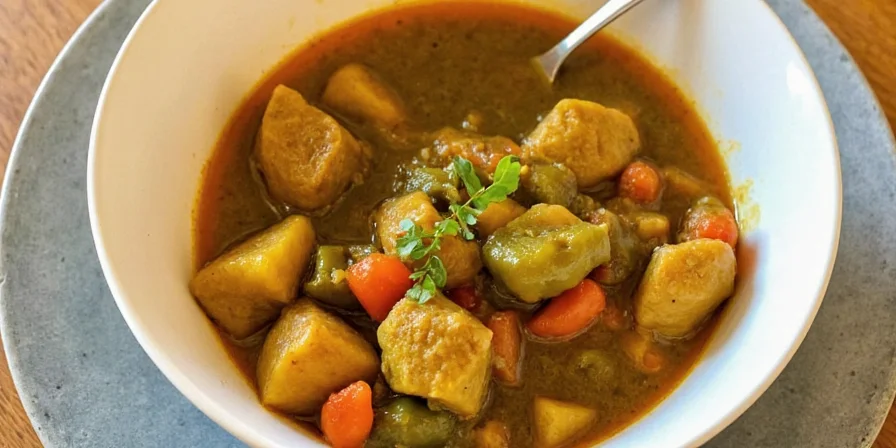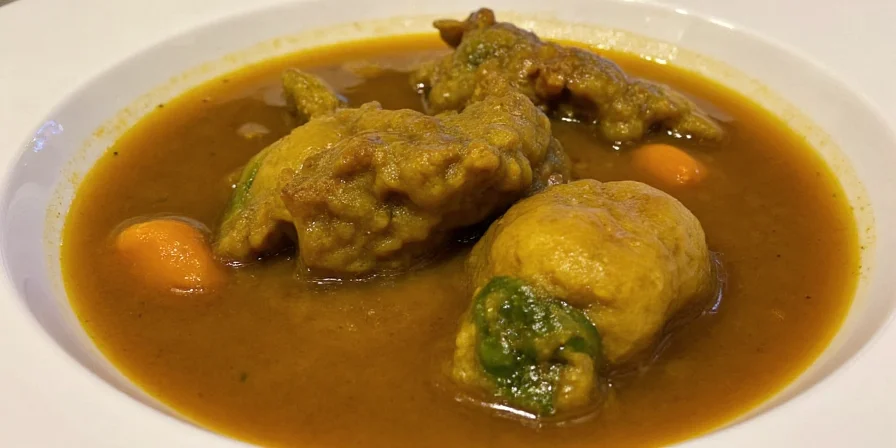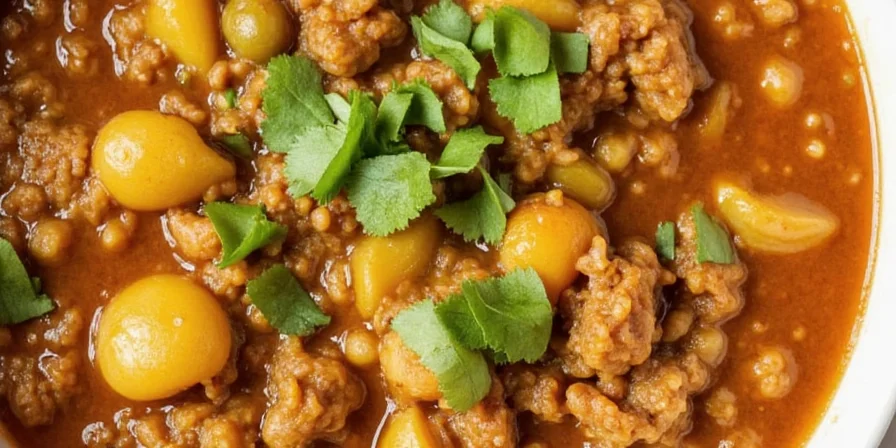Looking for a simple, delicious green chilli stew recipe that actually works? This authentic version delivers perfect flavor in just 45 minutes using common ingredients you likely have at home. Forget complicated techniques - our tested recipe gives you rich, balanced heat without overwhelming spice. Ready to cook? Jump straight to the full recipe below or read on for essential tips that make all the difference.
Why This Green Chilli Stew Recipe Works
Most home cooks struggle with green chilli stew because they either end up with bland results or uncomfortably spicy dishes. The secret lies in three simple techniques:
- Balanced heat: Using the right ratio of mild and hot chillies creates depth without burning your mouth
- Proper timing: Adding lime juice at the end preserves fresh flavor (not cooked out)
- Smart ingredient prep: Removing some chilli seeds controls spice level while keeping flavor
This recipe serves 4-6 people and takes just 45 minutes from start to finish. Perfect for weeknight dinners or impressing guests!

Simple Green Chilli Stew Recipe
What You'll Need
- 4-6 fresh green chillies (2 mild like Anaheim, 2-4 hotter like Serrano)
- 1 large onion, finely chopped
- 3 cloves garlic, minced
- 2 cups vegetable broth
- 1 cup tomatillo salsa (or 2 diced tomatillos)
- 2 medium potatoes, cubed
- 1 tsp cumin
- 1 tsp oregano
- 2 tbsp cooking oil
- 1 lime, juiced
- Salt to taste
Step-by-Step Instructions
- Prep chillies: Remove seeds from 1-2 hot chillies (keep seeds in milder ones). Chop all chillies finely
- Sauté base: Heat oil in pot, cook onions until soft (5 min), add garlic and chopped chillies, cook 3 more minutes
- Build flavor: Stir in cumin and oregano, cook 1 minute until fragrant
- Add liquids: Pour in broth and tomatillo salsa, bring to gentle simmer
- Cook potatoes: Add potatoes, simmer 20-25 minutes until tender
- Finish: Turn off heat, stir in fresh lime juice and salt to taste
| Prep Time | Cook Time | Total Time | Servings |
|---|---|---|---|
| 15 minutes | 30 minutes | 45 minutes | 4-6 people |
Adjusting Heat Level for Your Taste
Don't like spicy food? Start with just 1 hot chilli and remove all seeds. Prefer extra heat? Keep seeds in all chillies and add an extra hot one. Here's how to customize:
| Heat Level | Mild Chillies | Hot Chillies | Seed Handling |
|---|---|---|---|
| Mild | 4 | 0-1 | Remove all seeds |
| Medium | 2 | 2 | Remove half the seeds |
| Hot | 1 | 3-4 | Keep all seeds |

Pro Tips for Best Results
- Make it creamy: Stir in 1/2 cup coconut milk at the end for rich texture
- Extra flavor: Toast whole spices before grinding for deeper taste
- Storage: Tastes even better the next day! Store in fridge up to 4 days
- Freezing: Freeze portions for up to 3 months (thaw overnight before reheating)
- Serving: Top with fresh cilantro, avocado slices, or a dollop of sour cream
Common Questions Answered
- Can I use frozen chillies? Yes! Thaw completely before using and pat dry
- Why add lime at the end? Cooking destroys lime's bright flavor - add it off heat
- How to reduce spice if too hot? Add a spoon of yogurt or a pinch of sugar
- Best chilli varieties? Mix mild (Anaheim) with medium (Jalapeño) for perfect balance

Regional Variations to Try
Green chilli stew varies beautifully across cultures:
- Mexican Style: Add epazote herb and serve with warm tortillas
- Indian Version: Include curry leaves and coconut milk for creamy texture
- Thai Twist: Stir in kaffir lime leaves and fresh basil at the end
- American Southwest: Add roasted corn and black beans for heartier stew
This simple green chilli stew recipe gives you authentic flavor without complicated steps. The balanced heat and rich broth make it perfect for any occasion. Try it tonight and discover why this comforting dish has been loved for generations!












 浙公网安备
33010002000092号
浙公网安备
33010002000092号 浙B2-20120091-4
浙B2-20120091-4